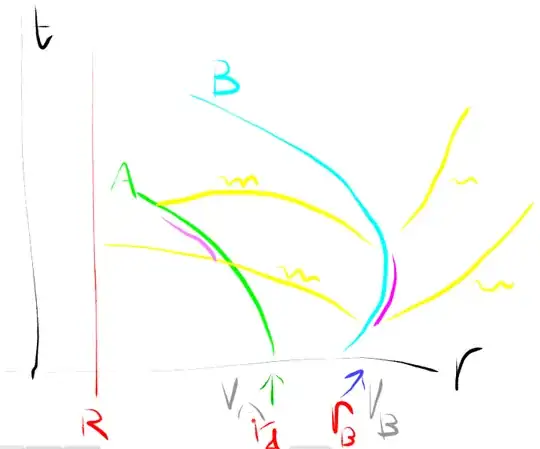This is not an answer but just a mathematical reformulation, if I get you correctly.
So you're in a 2D world with coordinates $(t,r)$ and a metric such as
$g=\mathrm{diag}(-\kappa(r),\dfrac{1}{\kappa(r)}),$
e.g. $\kappa(r)=1-\frac{R}{r}$ for the Schwarzschild metric.
You want to solve the geodesic equation for the 2-trajectory $x(s)=(t(s),r(s))$ starting at an event $x=(0,r)$ and velocity $w=(w_0,w_1)$ with $g(w,w)=-1$. The solution is some $s$-parametrized line in spacetime that curves towards one direction, eventually ending up at $r=R$. And you want to know how the lightlight grid looks in this world. Here's a link to a talk on the Schwarzschild case.
You consider two guys at $x_A=(0,r_A)$ and $x_B=(0,r_B)$ with $r_B\gg r_A\gg R$ and velocities $v=(1,0)$ (the closer one is at rest, just free falling) and the other guy has some impulse away from $R$, say. These initial conditions give two curves who bend towards $r=R$. Each event in spacetime of course has two outgoing lightlike deformed cones. You're interested in how an the arc-lenght of one guys (say you choose a point and look at a distance of 1 along that guys trajectory) gets "projected" via the light-grid onto the other.
This link (on Gravitational time dilation) might also be relevant.
And I now see this SE question.

